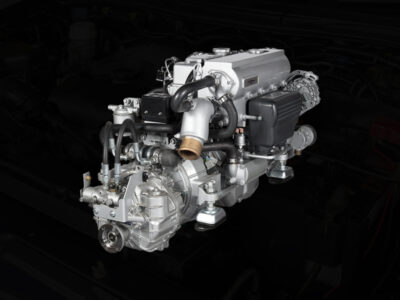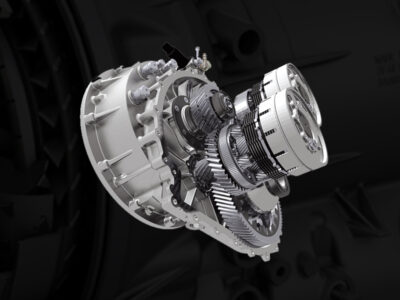
Purchasing a low mileage used engine can be an effective way to save money while maintaining your vehicle’s performance. However, to ensure you make a wise investment, it’s crucial to perform a thorough inspection and verification of various factors. Here, we outline essential aspects to check before buying a low mileage used engine to help you make an informed decision.
Key Factors to Inspect When Purchasing a Low Mileage Used Engine
1. Verify the Engine’s Mileage Claims
One of the most critical steps is confirming the accuracy of the mileage. Many sellers may advertise an engine as “low mileage,” but verification is essential:
- Request documentation such as the original vehicle’s service records or a Carfax report to match the engine’s actual mileage.
- Check the odometer reading of the donor vehicle, if available. Ensure that the reading is consistent with what the seller claims.
- Look for signs of odometer tampering or discrepancies in service records.
2. Inspect the Used Engine’s Physical Condition
A visual inspection can reveal significant details about the engine’s overall state. Ensure you:
- Look for oil leaks: Check the exterior of the engine for signs of oil seepage, which could indicate worn seals or gaskets.
- Examine the engine block: Inspect for cracks or damage that could compromise the engine’s integrity.
- Check for corrosion: Rust or corrosion on metal components can signal exposure to moisture, which may lead to internal damage.
3. Evaluate the Engine’s History and Origin
Understanding where and how the engine was previously used can provide insights into its longevity:
- Inquire about the donor vehicle’s history: Was the vehicle involved in an accident? Was it primarily used in city driving or highway conditions?
- Ask about storage conditions: An engine stored improperly can suffer from internal damage, even if it has low mileage.
- Confirm if the engine came from a reliable source such as a reputable salvage yard or certified used parts dealer.
4. Check for Compatibility with Your Vehicle
Ensuring that the engine is a match for your vehicle model is crucial to avoid complications during installation:
- Verify the engine code: Cross-check the engine code or part number with your vehicle’s specifications to ensure compatibility.
- Review electrical and sensor connections: Ensure that the used engine’s components align with your vehicle’s wiring harness and sensor configurations.
- Confirm ECU compatibility: Make sure that the engine control unit (ECU) or any related electronic systems can integrate seamlessly with your car’s existing setup.
5. Perform a Compression Test
A compression test is a valuable way to evaluate the internal health of an engine:
- Test each cylinder’s compression: Ideally, each cylinder should have a similar and high compression reading. Significant differences between cylinders may indicate worn piston rings or valve issues.
- Listen for irregular sounds: During a compression test, abnormal sounds can indicate potential problems with the internal components.
Also read: Understanding Engine Specifications: A Key to Your Car’s Performance
6. Inspect Internal Components If Possible
If the engine is accessible, examine its internal condition to get a better understanding of potential issues:
- Check the timing belt or chain: Ensure the timing mechanism is in good condition, as a worn-out belt or chain could lead to serious problems.
- Inspect the cylinder head and valves: Look for signs of damage or carbon buildup, which can affect performance.
- Examine the pistons and cylinder walls: Visible scoring or pitting could indicate previous overheating or poor maintenance.
7. Assess the Engine Oil Condition
The quality and state of the engine oil can reveal a lot about its prior maintenance:
- Check the oil color: Fresh oil is typically amber, while dark, sludgy oil may indicate neglect or high mileage.
- Inspect for metal shavings: Tiny metallic particles in the oil can signal internal engine wear, such as bearing or piston damage.
- Evaluate the oil level: An unusually low oil level could mean there are leaks or excessive consumption issues.
8. Review the Cooling System
An effective cooling system is essential for engine longevity. Inspect the engine’s cooling components to ensure they are in working order:
- Check the condition of the water pump: A failing water pump can cause overheating and lead to severe engine damage.
- Inspect the radiator and hoses: Look for cracks, wear, or signs of leaks.
- Test the thermostat: A stuck or malfunctioning thermostat can result in poor temperature regulation.
9. Confirm Warranty and Return Policy
When purchasing a low mileage used engine, a warranty can provide peace of mind:
- Inquire about a warranty: Even if the engine has low mileage, unexpected issues can arise. A warranty ensures you have recourse if the engine fails prematurely.
- Understand the return policy: Ensure that the seller has a clear and fair return policy in case the engine does not meet your expectations or proves defective.
10. Consider the Seller’s Reputation
Choosing a reputable seller is as important as the engine inspection itself:
- Read reviews and testimonials: Look for feedback from previous customers regarding the seller’s reliability and the quality of their products.
- Verify the seller’s credentials: Ensure they are licensed and have a good standing in the industry.
- Evaluate customer service: A seller who is communicative and willing to answer questions is more likely to be trustworthy.
11. Test for Noises and Odd Vibrations
Before finalizing your purchase, testing for unusual noises can be highly revealing:
- Listen to the engine running, if possible. Pay attention to knocking, ticking, or rattling sounds that might indicate worn components.
- Feel for vibrations: Excessive vibrations when the engine is running could suggest alignment issues or damaged mounts.
12. Ensure Proper Paperwork and Documentation
Completing your purchase with the correct paperwork ensures transparency and legal protection:
- Get a bill of sale: This document should include engine details, the seller’s information, and any warranty conditions.
- Request any related service records: These can provide valuable information about past maintenance and potential issues.
- Confirm the engine identification number (EIN): This ensures that the engine you receive matches the seller’s description.
Conclusion
Buying a low mileage used engine can be a cost-effective solution for your vehicle, but it comes with its share of risks. By following these comprehensive checks and inspections, you can mitigate potential pitfalls and invest confidently in an engine that will serve you well. Taking the time to carefully evaluate and verify each aspect of the engine will lead to a more reliable purchase and long-term vehicle performance.
How A111 Auto Parts Can Help?
A111 Auto Parts provides top-quality, low mileage used engines for various makes and models at competitive prices. With a strong reputation, warranties, and free shipping, we ensure you receive reliable parts that enhance your vehicle’s performance. Get in touch with our knowledgeable mechanics at +1(888) 944-0111 for expert assistance or visit our website to explore our extensive selection of used engines.





